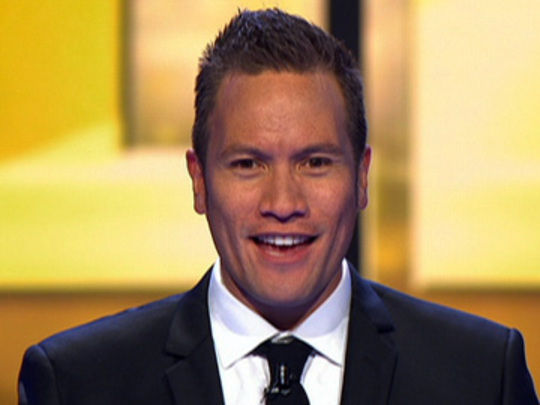
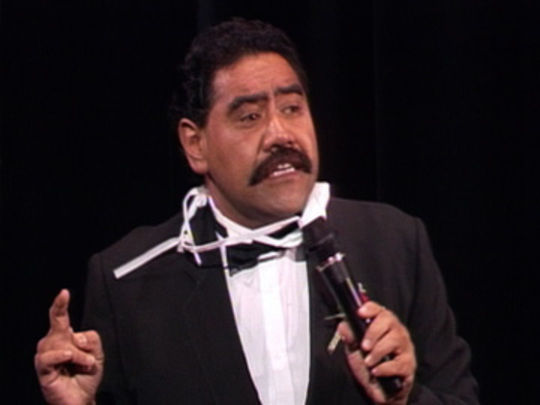
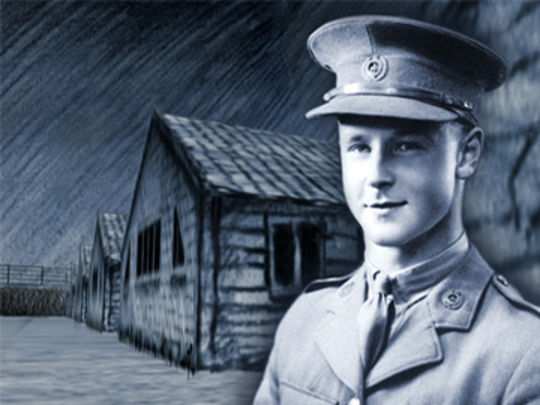
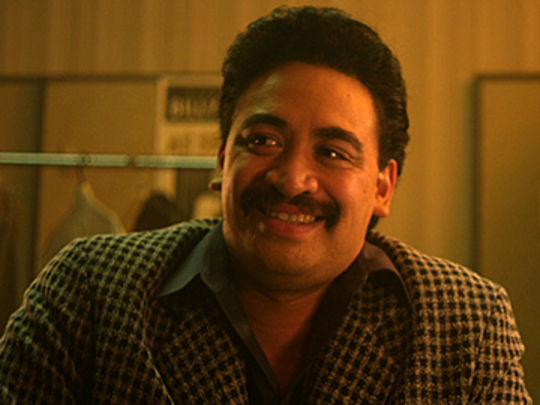
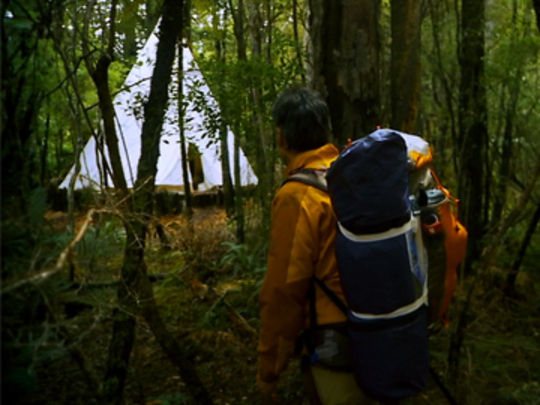
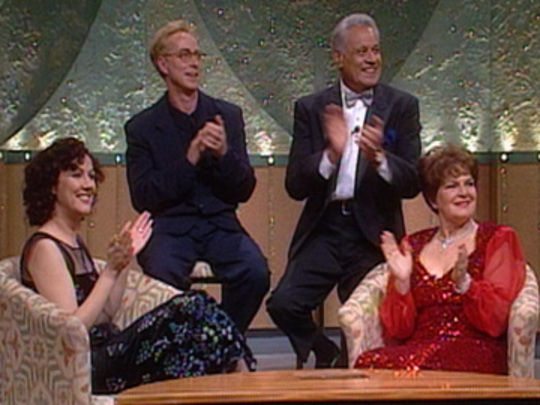
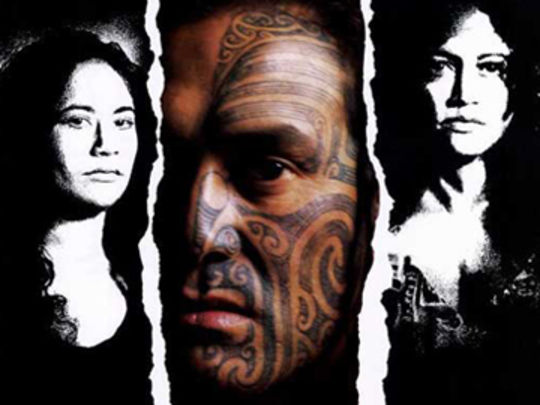
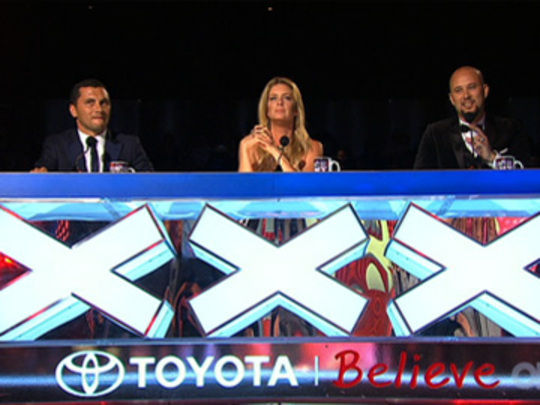
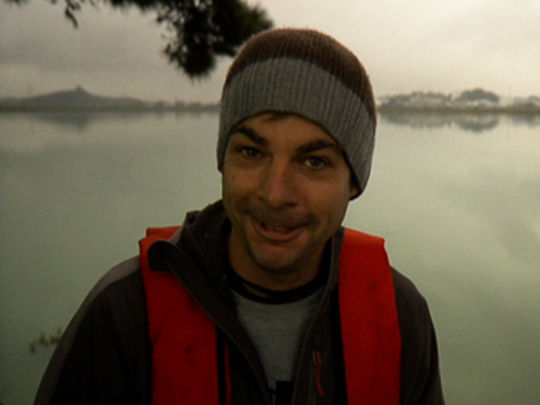
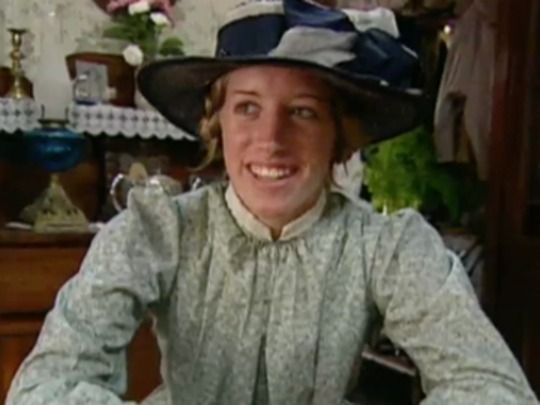
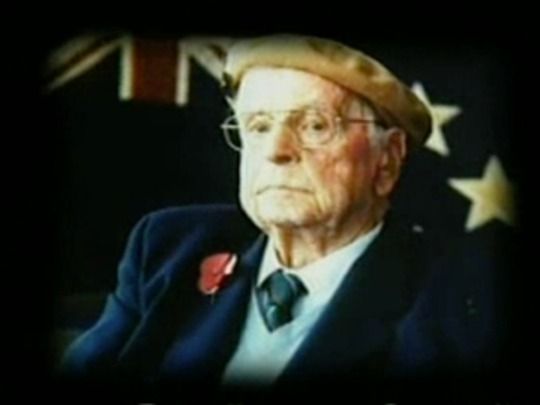

NZ On Air Top 20
NZ On Air Top 20
This collection has two backgrounds:
The Most Watched Kiwi Shows
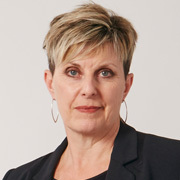
The Birth of NZ On Air
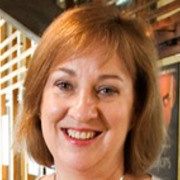
The Most Watched Kiwi Shows
By Kathryn Quirk 23 Jun 2017
Since 1989, NZ On Air has been funding local content, “so you can see more of New Zealand on air”. On July 1 2017 a new funding model kicked in, one that is more reflective of today’s viewing habits. People making up their own minds about what, when and how they watch — OMG! YouTube, on demand, streaming services increasingly creating an itch we have to scratch — there’s content everywhere.
A good time then to take a look back at the 20 most watched New Zealand programmes (excluding news and sports) brought to you, with funding from you — the taxpayer. Ratings information is only available from 1995, so this is how things have shaped up from 1995 to 2016 — plus some bonus titles at the end, which won big audiences in the early days of NZ On Air. And not before we give a nod to Eric the Goldfish, also making a comeback in a more modern guise (as the name of NZ On Air’s new online application system).
1 - New Zealand’s Got Talent (TV One, 2012/13 funding year): 899,965 viewers (all ages over 5)
I think we know it wasn’t UB40’s Ali Campbell that put this programme in the top spot. But fellow judge Rachel Hunter really found her place on TV One’s first season of New Zealand’s Got Talent, alongside Opshop frontman Jason Kerrison. Presented by now Labour candidate and Rotorua bar owner, Tamati Coffey, this was a shared viewing experience (‘see you and raise you’ streaming services) embraced by the nation. Clara van Wel was declared the winner.
2 - Billy T James - A Celebration (TV One, 1995/96): 862,500
Marking the fourth anniversary of the beloved entertainer’s death, The Billy T James Special was a retrospective introduced by Pio Terei. Airing in August 1995, it looked back over a stellar career (not all of it funny) and reminded us of Billy T's prodigious talent, comedic genius, and trademark giggle — all wrapped up in that imposing physique.
3 - Dare to Be Free (TV One, 2003/04): 829,000
Screening on Anzac Day in 2004, Dare to Be Free told the story of courageous Kiwi soldier WB ‘Sandy’ Thomas and his remarkable escape from the Nazis in World War II — after four failed attempts. One gutsy Kiwi, whose exploits earned him the first of two MCs, the military’s third-highest award for bravery. His most recent battle was with the New Zealand Government when he was looking for support to fund a return to Crete.
4 - Sunday Theatre: Billy (TV One, 2011/12): 733,007
A second appearance in the Top 20, two decades after his passing: proof that Billy T James’ place in the nation’s hearts hadn't faded. Not to be confused with documentary Billy T: Te Movie, Billy was a dramatised depiction of William James Te Wehi Taitoko’s life — the highs and the lows. It was a ratings winner for TV One in August 2011.
5 - South (TV One, 2009/10): 727,600
Following his trainspotting escapades in Off the Rails and the Antarctic adventures of Ice, Marcus Lush called this 2009 series "a love letter" to the characters and stories of the south. New Zealanders clearly agreed; they watched the seven episodes of South in droves.
6 - Showcase (TV One, 1996/97): 727,300
Nestled somewhere between the early TV talent shows that gave us the likes of Split Enz, Shona Laing and Space Waltz, and the Idol and Got Talent franchises that gave us…um…Showcase gave us a very young Jason Kerrison performing in a duo called Akustik Fungi. They made it to the grand final, but were pipped at the post by Chaitanya Santana Smith. Remember? The winner of the viewers’ final — opera singer Shaun Dixon. Remember?
7 - Once Were Warriors (TV3, 1995/96): 705,200
The only entry in the Top 20 that screened on TV3 was the powerful and confronting Once Were Warriors. It remains one of New Zealand’s highest-grossing movies, taking more than $6.7 million at the box office. Arguably, Temuera Morrison’s performance as Jake 'the Muss' Heke remains his strongest. So too Rena Owen's as his wife Beth. (NZ On Air makes minor investments in feature films, for the TV screening that follows the cinema release.)
8 - New Zealand’s Got Talent, 2013 series (TV One, 2013/14): 693,200
New Zealand’s Got Talent makes another appearance in the Top 20, with TV One’s second season showing us that New Zealanders really do love to watch talent shows (and that Ali Campbell wasn’t the drawcard for season one). We might like to watch them, but we don’t make stars out of them. The winner of this series: Renee Maurice.
9 - North (TV One, 2010/11): 683,800
You couldn’t have a series on the south without following up with the north, and so it was. Marcus Lush, once again at one with the land, and the people of the land, roving the north of the North Island. Not quite as popular as its sister series — but that’s the mainland for you.
10 - Pioneer House (TV One, 2000/01): 682,500
The premise for this show was transporting a Kiwi family back in time, to live as a typical family would have, 100 years before. As TV reviewer Michele Hewitson noted at the time — as well as what a lovely irony it was — it quickly became quickly evident that television wasn’t needed by our forebears, because they were all too busy moaning to need outside entertainment.
11 - Our Oldest Soldier (TV One, 2001/02): 667,700
Also screening on Anzac Day, this is the second documentary in the Top 20 to chronicle the efforts of a New Zealander serving in a world war. In Our Oldest Soldier, filmmaker David Blyth points the lens on his own bossy yet personable grandfather. Lawrence ‘Curly’ Blyth was sent to the Western Front as a 16-year-old, went on to win a French Legion of Honour, and lived to the ripe old age of 105.
12 - National Bank Country Calendar (TV One, 2003/04): 665,500
The perennial favourite that has graced our screens since 1966, Country Calendar never goes out of fashion. It is New Zealand's longest-running TV programme, even lasting beyond long-time sponsor The National Bank, who were associated with this particular series. Kiwis continue to tune in, to observe (and perhaps hanker for) life in the country.
13 - The Two of Us (TV One, 1997/98): 662,500
In the 90s and early 2000s documentary was TV’s 'genre-du-jour'. Sadly (unlike Country Calendar) it has gone out of fashion — on mainstream TV anyway (‘see you and raise you’ say the streaming services). The Two of Us screened in TV One’s Tuesday Documentary slot, delivering a double whammy by delving into twins.
14 - Private Lives of Little People (TV One, 1997/98): 661,400
Still in the 90s and still watching documentaries, Private Lives of Little People was one in a series of documentaries that offered insight into the lives of others who are a little different — in this case, people born and living with dwarfism. It screened as part of TV One’s Documentary New Zealand strand.
15 - The Irish Connection (TV One, 1999/00): 648,600
A documentary in which raconteur Gary McCormick journeys to Ireland in a quest to trace his roots (of the ancestral kind), and learn about the Emerald Isle’s links with New Zealand. In his travels he tracks down a number of Kiwi expats and interesting locals (with subtitles where required). There’s no mention of potatoes.
16 - Fatal Denial (TV One, 1997/98): 648,500
It’s not unusual to see prominent sports stars moonlighting as TV presenters. All Black Bull Allen appeared on a number of TV shows, including fronting Fatal Denial, a documentary that investigated fatalities on New Zealand’s rural roads. It aired in TV One’s Tuesday Documentary slot, soon after the NZ Transport Agency launched the “Country people die on country roads” road safety campaign.
17 - Letter to Blanchy (TV One, 1996/97): 640,700
Originally declined for NZ On Air funding for being “anti-women”, Letter to Blanchy leaves its mark in the Top 20. The much-loved rural comedy had a veritable who’s who of comedic talent as its driving force. Duo David McPhail and Jon Gadsby both penned and starred in the series. Tom Scott and AK Grant were also writers. The sitcom ran for three series and was adapted for a theatre tour in 2008.
18 - Sunday Theatre: Tangiwai - A Love Story (TV One, 2011/12): 636,839
After Billy, Tangiwai - A Love Story was the second most-watched Sunday Theatre drama, funded by NZ On Air’s Platinum Fund. Winner of four NZ TV awards, this drama retold the story of the tragic 1953 Christmas Eve rail disaster, and the love between international cricketer Bob Blair and his fiancée Nerissa Love who lost her life in the tragedy.
19 - Global Radar (TV One, 2011/12): 635,730
Global Radar is the third title in the Top 20 produced by JAM TV (after South and North), a production company with a successful track record of mixing idiosyncratic hosts with travel destinations. Following two NZ-centric series, in this outing comedian Te Radar (Andrew Lumsden) shifted his sustainability focus — and his sideburns — offshore.
20 - Country Calendar (TV One, 2000/01): 632,100
The final place in the Top 20 (and with further placings at 21,23 and 25) goes to a second appearance for rural TV icon Country Calendar: bucolic tales of farming, forestry, fishing and fecundity.
Notable mentions
Undoubtedly there were top-rating programmes that screened in the years that ratings information is unavailable (1990-1995). A trawl through NZ On Air’s annual reports for those years highlights some notable mentions:
Shortland Street — peaking at 871,000 viewers (1994/95)
It’s no real surprise that New Zealand’s answer to Coronation Street hit such a ratings high. Ferndale’s comings and goings, births, deaths and marriages — not to mention the “penis” cliffhanger — have long kept Shortland Street on the most watched list in many a Kiwi TV household.
Lew Pryme - Welcome to My World — watched by 819,000 (1990/91)
This documentary told the extraordinary life of Lew Pryme, a closet gay man (until this programme screened) immersed in the entertainment business, who went on to become Executive Director of Auckland Rugby Union. He took part in this documentary on the proviso it screened after his death from AIDS in 1990.
Heroes — watched by 790,000 viewers (1993/94)
Not to be confused with the show about a rock band, this rescue and survival series with dramatised reenactments was produced by production company Communicado.
Learning New Stuff — watched by 750,000 (1991/92)
An award-winning documentary following a young boy’s progress through Auckland’s Glenburn Centre, a residential school for children with behavioural problems.
Source for ratings information
NZ On Air Annual Reports 1996 - 2016 (AGB McNair/AC Nielsen-McNair/A C Nielsen/AGB Nielsen/Nielsen/The Nielsen Company) All people aged five plus (series audiences, averaged across series)
Captions
Many of the titles in this collection have captions provided by Able, a service funded by NZ On Air.
- Kathryn Quirk is Content Director of NZ On Screen. Her career in broadcasting and production includes management roles at TVNZ and MTV New Zealand, and two years at NZ On Air. She has also produced music shows for TVNZ.
The Birth of NZ On Air
By Ruth Harley 07 Jun 2017
NZ On Air (then known as The Broadcasting Commission) came into being on July 1989, as part of one of the many restructures of broadcasting. It was a manifestation of the ideology of the time that advocated the separation of funding programmes (funders) from organisations that were charged with spending the funds (providers). Each of these functions was to be separated from policy making. The funder/provider/policy split necessitated the break up of the Broadcasting Corporation of New Zealand (BCNZ) into its component parts of TVNZ, BCL (the transmission arm), Radio New Zealand and the NZ Symphony Orchestra.
This left two functions to be allocated: the policy function, which went to the Ministry of Commerce and the collection and allocation of the Broadcasting Fee (a small fee levied on every household in NZ that owned a television set) which was to be administered by a new entity, The Broadcasting Commission. In 1990 the Commission was rebranded as NZ On Air (although officially it still retains both titles).
The transmission, radio and orchestral functions were clearly identified. They were to be state owned enterprises (SOE’s) in common with many other organisations. Their purposes and commercial/non commercial mandates were clear. Radio NZ was to be bulk funded through NZ On Air, and the NZSO through the Ministry for Culture and Heritage.
Simultaneous with the break up of the BCNZ was the awarding of a third channel broadcasting licence to TV3. Unlike radio, there was to be no public service television broadcaster. Rather than have a specific broadcaster charged with this function, a “specialist purchasing agency” was created. NZ On Air’s role was to purchase television programmes from producers for broadcast on either TVNZ’s two channels or TV3. The idea was that the funds gathered from the collection of the Broadcasting Fee would be allocated by the new agency to achieve public good broadcasting goals. These goals were further defined in the Broadcasting Act 1989, but the words “ public service broadcasting” did not appear in the Act or any of the surrounding documentation, except in relation to radio.
The idea behind the “specialised purchasing agency” model was that competitive tendering by providers would drive costs down and the quality of ideas up thereby enabling more and better public good programmes to be made. As far as I know there was only one other such agency in New Zealand, which was (and still is) Pharmac.
This left TVNZ a hybrid. Its mandate was to operate as a commercial entity but public expectation was that it would provide public service programming. To support this, government required that it be commercial free on Sunday mornings, creating a space in the schedule for programming of specific interest to Maori, Pasifika and people with disabilities. A further problem was that the funding for such programmes had now been shifted to the new agency. TVNZ found this combination of obligation without control of the funding to meet the obligation very frustrating.
Their frustration was compounded by the complexity the new agency created in the commercial environment. TV3 also had access to NZ On Air funds and were very hungry for the funds. They had no hybrid mandate to contend with. They wanted funding to support prime-time programming. TVNZ sought to manage this by strenuously but unsuccessfully advocating for a section of the TV funding to be bulk allocated to them, to enable them to meet their obligations. They further sought to ensure that the NZ On Air funded programmes were confined to offpeak slots in the schedule. Julian Mounter, the then CEO of TVNZ once famously said that the purpose of the NZ On Air funds was to fund “programmes about fox-hunting and the like on Sunday afternoons”.
The Broadcasting Act clearly mandated mainstream as well as special interest programming. NZ On Air was very ambitious for what New Zealand television programmes could achieve. Despite the fact that we knew that we didn’t have the funds to achieve a majority of NZ made programming, our vision was to fund NZ made programming that was prominent, important to audiences and popular. This was diametrically opposite to TVNZ’s vision and led to heated debate.
The debate culminated in NZ On Air’s decision to let a tender for a soap. We believed that a soap would make a huge cultural impact, that it would enable us to reach diverse audiences as well as young people, and that it would build capability and capacity in the industry. The numbers in this collection show that the strategy worked. The recent 25th celebration of the success of Shortland Street documents the writers, directors and actors who have come through 'Shorty' and formed a base for our theatre, film and television drama industry.
- Ruth Harley was the first Executive Director of NZ On Air. She went on to lead the NZ Film Commission for a decade, before beginning five years as head of organisation Screen Australia.